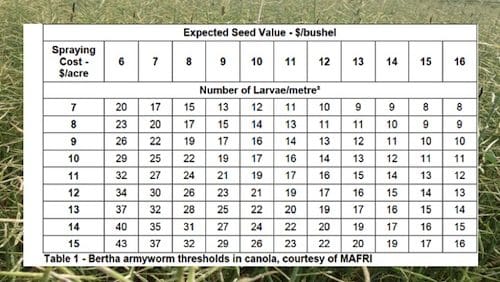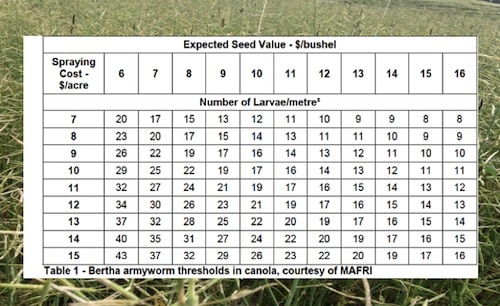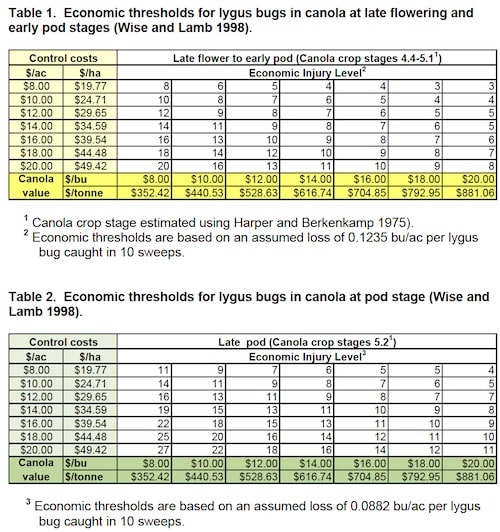Here is a review of thresholds for the four major insects found in canola in the last half of the season.
Bertha armyworm: If canola is $12 per bushel and spray costs $8 per acre, for example, the threshold is 11 larvae per square metre. Check the tables below for other economic scenarios. Once bertha numbers are at or over the economic threshold, spray as soon as they start feeding on pods. Click here for scouting tips. Click here for more on action recommendations.
Lygus. Thresholds are based on late flower/early pod and late pod stages, which is when lygus cause more economic damage. If canola is worth $12 per bushel and spray costs $8 per acre, the threshold at the late flower/early pod stage is 5 lygus adults or late instar nymphs per 10 sweeps. Check the tables below for other economic scenarios. Click here for scouting tips. Remember to include both the cost of the insecticide as well as the application cost (it’s not “free” if you spray it yourself) when determining your spray cost.
Diamondback moth larvae. Thresholds are 100-150 larvae per square metre in immature to flowering plants or 200 to 300 larvae per square metre in plants with flowers and pods. However, these are based on dense stands of 150-200 plants per square metre (15-20 per square foot). Reduce thresholds for thinner stands. Note that diamondback moths have some really effective natural enemies that can kill them off and often make a spray application completely unnecessary. Click here for scouting tips.
Cabbage seedpod weevil. Scout at early bloom and up to 20% bloom. The economic threshold is 20 to 30 weevils in 10 sweeps. The higher the price, the lower the threshold. Anything below 20 per 10 sweeps and the canola plant will generally compensate for seedpod weevil damage to the buds and flowers. Click here for scouting tips.
Combining thresholds for multiple insects. Many canola fields have a combination of insects feeding on the crop. An “additive” effect is possible when more than one species are feeding on key yield-producing areas — flowers, buds or pods — at the same time. For example, if pod feeders such as lygus and cabbage seedpod weevil are in the same field and both at 50% or more of their economic spray thresholds, spraying may provide an economic benefit. If bertha armyworm are moving up to pods, then include them in the count.
Further reading:
The full thresholds article.
Top 10 things to consider when scouting for insects.


